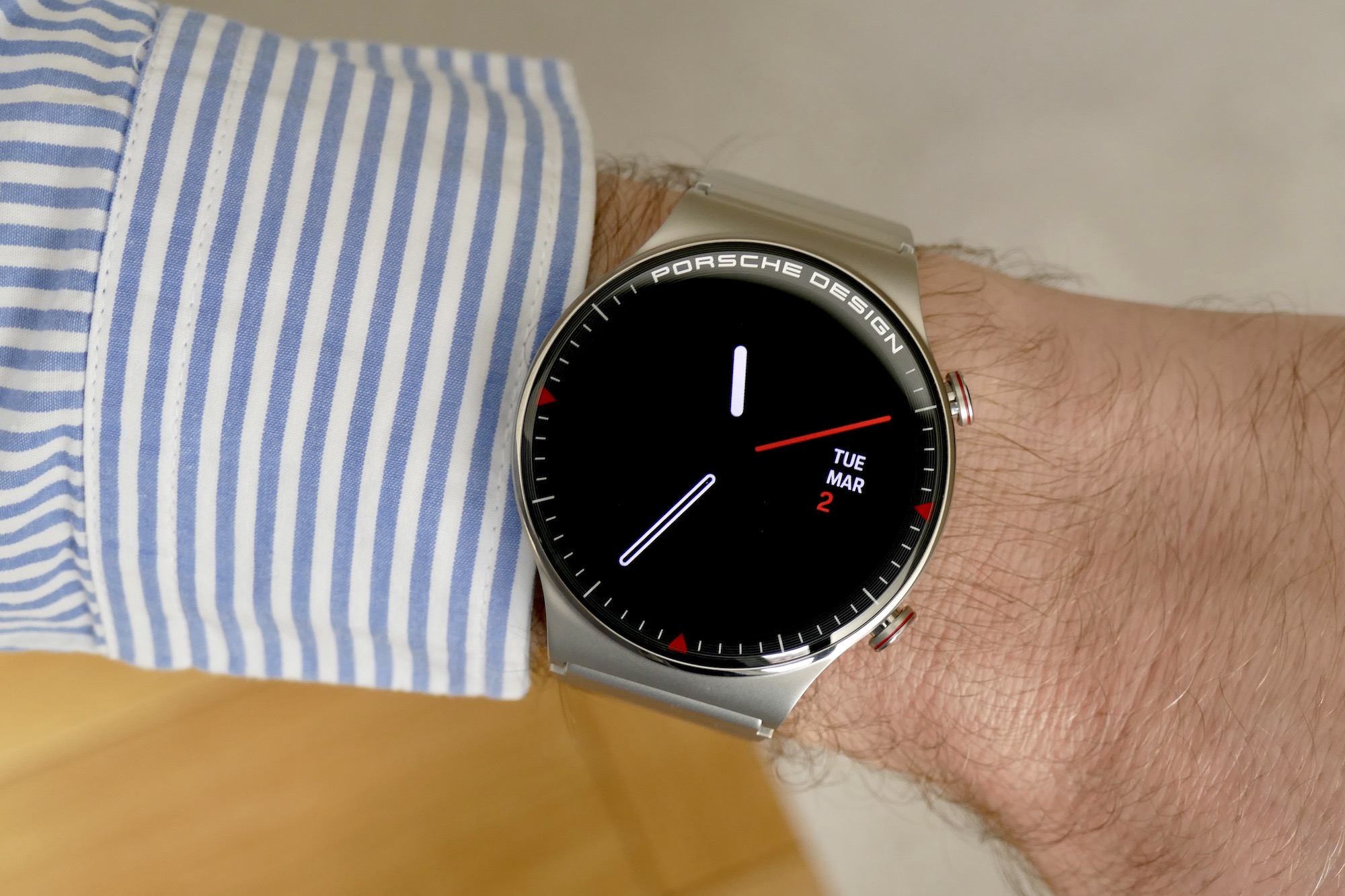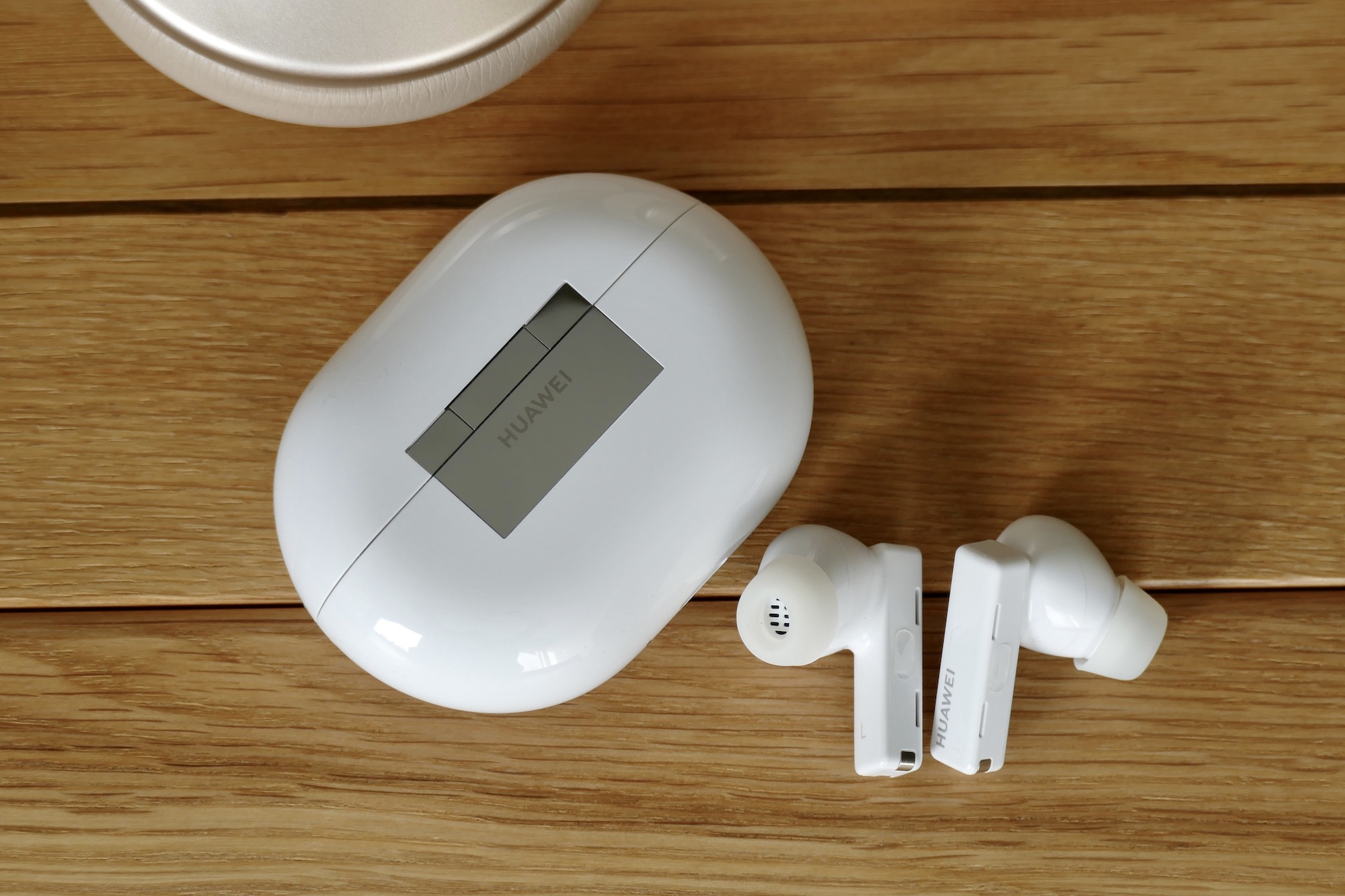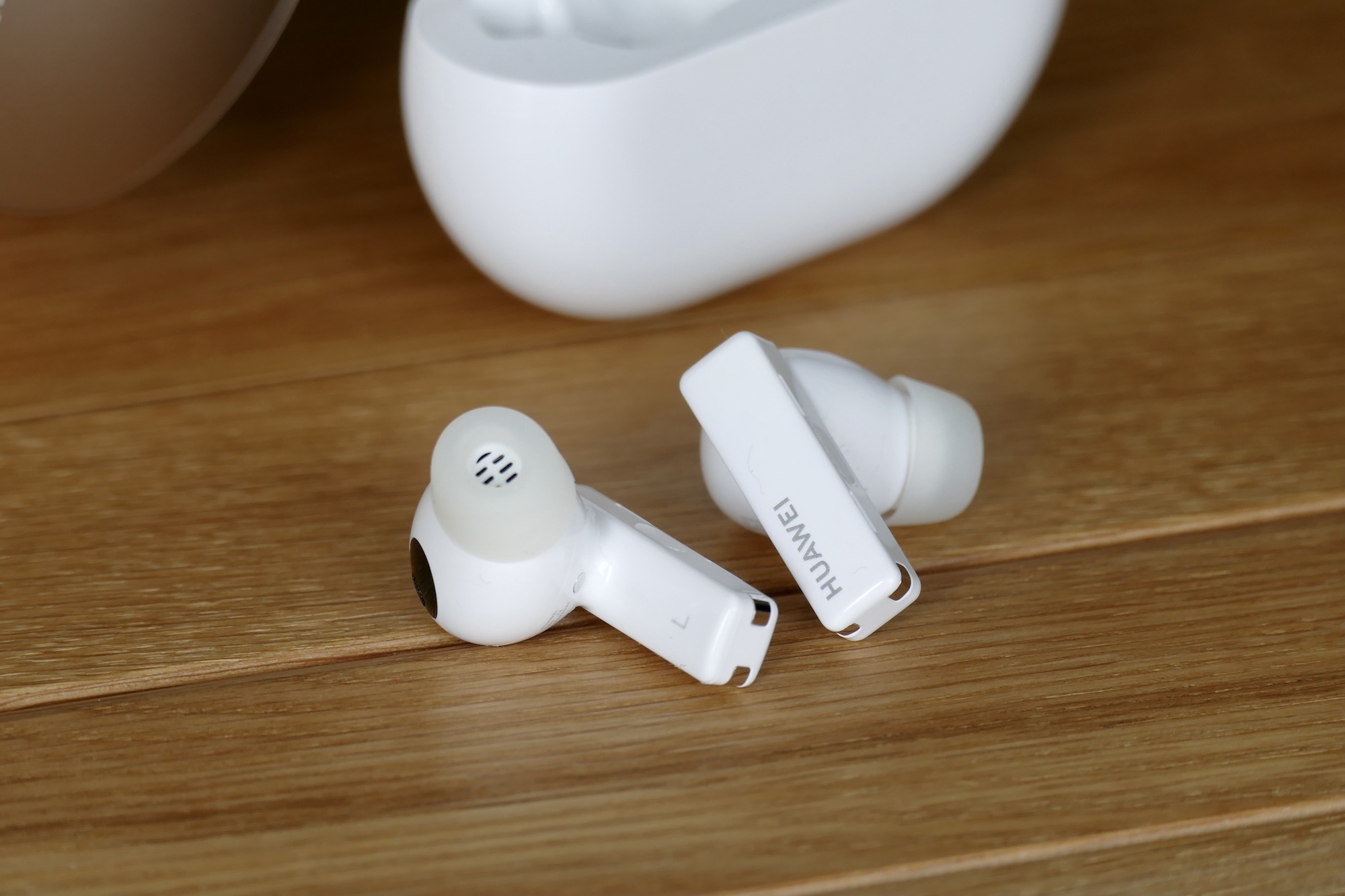There’s only one question to answer before you decide to buy a Huawei phone — can you live without Google? If the answer is yes, then great, but if it’s no, then a current Huawei phone is not for you. However, Huawei’s other connected products are well-priced and desirable, and don’t require you to own a Huawei smartphone to enjoy them. They work well, but what about the apps you need to make them work?
I’ve been using two different pairs of Huawei headphones, as well as a version of its most recent smartwatch, with Android, iOS and Huawei smartphones to find out.
The Huawei phone conundrum
This exercise isn’t focused just on consumer advice — it also gives an insight into Huawei’s current position and how it’s shaping up for the coming year. Why? Huawei’s smartphone business faces continued problems, so the company is currently placing more emphasis on its other connected products, including smartwatches, headphones, and speakers. These segments need to take up some of the slack from the smartphone division, and to do that, they all need to work really well with Android and iOS, making them accessible to everyone.

I’ve been using three of its flagship products — the Porsche Design Huawei Watch GT2 smartwatch, the Huawei Freebuds Pro true wireless headphones, and the Huawei Freebuds Studio over-ear headphones. I paired them with a Huawei Mate 40 Pro, a Samsung Galaxy S21+, and an iPhone 12 Pro. Like most connected products, all these work best with an app installed on your phone to activate different features, keep the software up-to-date, and in the case of the smartwatch, deliver notifications and track activity.
What I discovered is Huawei’s app ecosystem is a little messy, and how easy you can get everything going depends heavily on the phone you are going to use with the Huawei device. Let’s get into detail about how each product interacts with your phone.
Porsche Design Huawei Watch GT2
I’ve already reviewed the smartwatch, and it remains a very capable fitness-orientated wearable. While the Porsche Design version is very expensive, it does look excellent, but the standard Watch GT2 Pro version is technically identical, offers better value, and still looks good, too. Huawei has been perfecting its fitness- and sleep-tracking technology for some time, and the GT2 Pro’s health tracking is not only easy to use, but it’s also accurate and detailed.

There are plenty of reasons to use a Watch GT2 Pro, Porsche Design or otherwise. But can you use it with any phone? The smartwatch requires the Huawei Health app, which is available for iOS and for Android, as well as from the Huawei App Gallery of course. Health worked without a problem on Android and iOS, in the same way it does on the Mate 40 Pro. The only real difference was on iOS, where it wasn’t necessary to sign into a Huawei account, which is needed on the Android and Huawei phones.
Connected to iOS, the Watch GT2 Pro works very well, delivering most notifications and recording activity data as well. It downloaded and applied a firmware update, although this did take ages, and you can also customize the watch face and adjust other settings directly through the app. Overall, it’s a very similar experience to using Google’s Wear OS with iOS, in that it does the basics but nothing more, including having no ability to interact with notifications. No, you shouldn’t buy one over an Apple Watch if you are an iOS user, but it’s no worse than using other non-Apple smartwatches with the iPhone.
Using the smartwatch with Android or iOS is an example of how Huawei’s products need to interact with other companies’ smartphones. The app is downloaded from the most familiar app store, it doesn’t need too much customization to work properly (some permissions need to be set on Android, but that’s all), and it does everything the same app does on Huawei’s phone. It’s consistent in design and operation across the three platforms, and that’s how it should be.
Freebuds Studio
If you choose a pair of Huawei’s headphones, things change compared to the smartwatch, and alter again depending on the phone you’re using. I’ve been using the Huawei Freebuds Studio for a couple of weeks, and they’ve become my go-to over-ear headphones with noise cancellation. They’re really excellent, and a lot of this comes down to the design.
They weigh 260 grams, a lot less than Apple’s 384-gram AirPods Max, and the generously padded earcups and hanger make them exceptionally comfortable to wear for extended periods. I’ve found the active noise cancellation (ANC) to be very effective, and having a physical button on the earcup to use the feature is very helpful. The sound better suits vocal-forward music than anything too bass heavy, with a delightfully neutral tone.

I highly recommend giving them a try, especially if you own an iPhone. The headphones don’t use Huawei Health like the smartwatch. Instead, the Huawei AI Life app is your gateway to unlocking the features on the Freebuds Studio. It’s available from Huawei’s App Gallery, Google Play, and from the Apple App Store. When AI Life is downloaded from the App Store, it searches and quickly finds the headphones, pairs, and updates the firmware. It’s essentially the same experience as it is on the Mate 40 Pro.
The app is fast and attractive, with the ability to activate the different noise cancellation modes, use the swipe and tap gestures, and turn the auto-pause feature on or off when removing the headphones. There’s a handy battery meter, too. It’s essentially the same as using a Sennheiser, Bang & Olufsen, or any other headphone company’s app. The only difference between it and the App Gallery version is a missing Smart HD feature, which switches the audio quality in the event of a poor Bluetooth connection.

Visit the Google Play Store and the Huawei AI Life app is available, however, when you download it and scan for the Freebuds Studio, the headphones are not found. Try to pair them manually through the app, and the Freebuds Studio are not listed as an option. You can pair them simply using the Bluetooth menu on your phone, but this doesn’t let you use any of the features, or update the software.
To solve this is messy: You must download the Huawei App Gallery and then install the version of AI Life inside that store, which lists the Freebuds Studio and then connects freely. While it’s not a problem to install the App Gallery, it’s a long-winded, unnecessary process that may put off those who aren’t used to alternative app stores on their phones. This happens right away after buying the headphones. Not good.
Huawei Freebuds Pro
The Freebuds Pro are the latest generation of Huawei’s true wireless headphone range, and they introduce silicone eartips for a secure, isolating fit, much like the Apple AirPods Pro. The app situation is the same as the Freebuds Pro. If you have an iPhone, then it’s a great experience. If you own an Android phone, you’ll have to jump through the same hoops as the Freebuds Studio to unlock all the features.

The features are worth it. In particular, the Freebuds Pro have one of the best gesture-based control systems I’ve used on a pair of true wireless headphones. Rather than a tap, functions are activated using a pinch of the stems, and this is accompanied by an audible click, telling you the gesture has been recognized. It’s responsive and accurate, and also works to adjust the ANC and awareness mode.
How do they sound? There’s a little more bass to the Freebuds Pro than with the Freebuds Studio, while the soundstage is considerably tighter, but they generally sound very good and suit most types of music. I liked the ANC performance, which worked well for removing distractions when working at home.
Linking the headphones to the AI Life app on my iPhone 12 Pro took only a few moments, but did require pairing through the Bluetooth Settings menu first, something the Freebuds Studio didn’t need. Also, the Freebuds Pro refused to show up in the Bluetooth list on my Galaxy S21+, forcing me to download the Huawei App Gallery for AI Life to make them work.
If I only had an Android phone, I may have regretted buying the Huawei headphones at this point, because there’s absolutely no guidance on what to do next from Huawei.
Why the inconsistency?
The inconsistency of Huawei’s apps is frustrating and strange. Huawei could solve the Android device problem by updating the AI Life app in the Google Play Store, but it has not paid any attention to it since August 2020. It’s possible Huawei is unable to update apps in Google Play for reasons related to the U.S. government’s ongoing restrictions, but it has updated both Huawei Health and AI Life in the Apple App Store in 2021, so this seems unlikely.
Huawei has long targeted Apple as its main rival, so in a way, it’s unsurprising the company makes its products work so well with Apple hardware, as it may help tempt a few iPhone owners toward a Huawei device in the future. The headphones in particular are excellent purchases, and work seamlessly with the iPhone. Likewise, forcing Android phone owners toward the Huawei App Gallery may also be a strategic decision, as the App Gallery is a direct response to its inability to use the Play Store, and the more people using it (a user is a user, even if it has been downloaded just to get a single app), the more pull Huawei has with developers.
If you own an iPhone, then picking up a pair of Huawei headphones is highly recommended
What it’s not good for is you and me. When the Play Store version of AI Life refused to work, I had to spend considerable time searching for a solution, and even then, it was hidden away in a thread on Reddit rather than Huawei’s websites. Installing a different app store and then downloading apps through it requires you to give it permission to do so on your phone, a daunting prospect for some people, and definitely not the introductory process new Huawei device owners should have to endure.
Taken as a whole, Huawei’s current ecosystem suffers from the same issue as its current phones — superb hardware and ability, let down by software that doesn’t always deliver what we want: Consistency and ease of use. Looking at the products more specifically, if you own an iPhone, then picking up a pair of Huawei headphones is highly recommended. Not only are the Freebuds Studio and Freebuds Pro great products, but the app experience is clean, simple, and reliable. Unlike its smartphones, you can buy the Huawei Freebuds Studio and Freebuds Pro in the U.S. through Amazon, with the Studio costing $315 and the Freebuds Pro $190.
To make its all-important ecosystem of connected products a success, Huawei must replicate the iPhone experience on Android too, or at the very least provide much clearer guidance on how to make them work. Otherwise, people are going to be put off by a bad out-of-the-box experience, and that’s not going to help the company at all this year.
Editors' Recommendations
- Nomad’s new iPhone case and Apple Watch band may be its coolest yet
- It’s official — Apple will announce the iPhone 15 on September 12
- The Realme GT 2 Pro has a crazy wider-than-wide-angle camera
- Huawei Watch D to launch on December 23
- Huawei Mate X2’s outstanding hardware stuns, but there is a shocking downside








